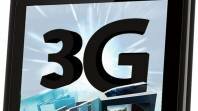With countries like Bangladesh, Afghanistan and even Somalia having launched third generation (3G) mobile communication service during the last few years, Pakistan slipped to the bottom of all global telecom and technology indices.
But the country will soon be back in the list of 10 emerging economies, as the government has announced a plan to complete licencing process for two 4G and three 3G telecom licences by mid-April this year.
The launch of 3G and 4G services will immediately start creating a new techno-social culture, especially in the rural areas, as both services will help flourish the use of internet.
Broadband internet will be available on mobiles, tabs and laptops and will provide greater access to people to make video phone calls, download music and movies, sell and purchase shares or commodity stocks, and a wide range of other social benefits in education, health care, governance, commerce, agriculture and people empowerment. All this means more income for the telcos and more revenue for the government.
Pakistan has a teledensity of 76 per cent. The number of mobile subscribers has reached 132 million but broadband subscribers are 2.9 million (penetration 1.6 per cent).
Nearly all technology experts agree that with these figures the country is bound to take a giant leap in broadband internet penetration over the next few months after the formal launch of 3G network.
As broadband will be available on the smart phones and tabs, which have become a lot cheaper due to the Chinese versions, the way people communicate is bound to change and improve.
Broadband has tremendous commercial applications but one of its main benefits lies in its capability as a deliverer of basic services to citizens, especially those in rural areas.
Mobile phone users will experience fewer dropped calls and better reception in areas with 3G coverage.
It will help improve productivity, more efficient business processes; better supply chain management; lower costs of accessing wholesale markets as a result of better interaction and coordination among market agents.
The most apparent benefit is the boost in internet speeds at an affordable price. Mobile phones, wireless modems and data cards will provide speeds comparable to digital subscriber line speeds.
Users will enjoy more multimedia applications and experience enhanced operation of existing applications. Real-time video conferencing is possible with 3G connectivity. They would be able to download films, music videos, images and play network games Fast.
Many countries in the region are already reaping the benefits of mobile broadband connectivity. China, Indonesia and Vietnam use 3G to enhance the educational experience of students through multimedia teaching over the smart phones.
India and Thailand are using 3G technology to provide better access to health care through increased patient-physician communication. India also uses 3G technology to allow fishermen to access real-time weather information that can save lives.
Similarly, in Pakistan 3G services could support improved education and health care delivery and could enhance public health initiatives.
In the new era of wireless broadband, news, gossips and trends will be viral in minutes, m-com, m-edu and m-gov is bound to thrive; m-shopping will be the fab, m-banking lot faster, media and entertainment industry could further strengthen its m-influence.
But there will remain a few m-grey areas, m-piracy, m-IPRs and m-crimes on which the government is m-silent, like always.
The writer is a journalist based in Islamabad.




















